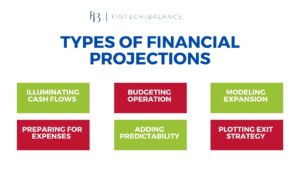Financial technology (fintech) companies are revolutionizing the financial services industry with innovative technology-powered products and services. Licensing becomes an essential consideration as these startups seek to scale and expand. Strong financial projections are vital to securing fintech licenses and demonstrating viability to regulators.
What is Fintech Licensing?
Fintech licensing refers to obtaining regulatory approval to operate in the financial sector. Since fintech companies provide financial services, they must comply with consumer protection, anti-money laundering, and other regulations. Essential fintech licenses include:
- Payment Institution License: It manages payments, transfers, and account services.
- E-Money Institution License: Used for issuance of e-money and operating of online core banking system, issuance of IBANs, etc.
- Specialized Credit Institution License: Providing for all of PI and EMI services but including monetary deposits, investment services, etc.
Regulators assess many factors when reviewing fintech license applications, with financial projections being critical.
What Are Financial Projections?
Financial projections are estimates of a company’s future financial performance over a defined period, usually 3-5 years. They are management’s best guess at how the company’s finances will look based on historical data, economic forecasts, and assumptions about the business.
Financial projections typically include projected/pro forma versions of the significant financial statements – the income statement, balance sheet, and cash flow statement. They estimate future revenue, expenses, assets, liabilities, and cash flows.
What are the types of Financial projections?

Financial projections empower organizations to chart their trajectory into the future. Leadership can strategically guide the company toward growth and profitability by modeling metrics like expenses, revenues, assets, and cash flows. Several projection types provide unique insights:
1. Illuminating Cash Flows
Cash flow projections spotlight the company’s liquidity—the lifeblood that funds operations. These statements track money flowing in from customers and out to pay obligations month-to-month and year-by-year. Analyzing past cash trends combined with forecasts helps ensure adequate working capital to support growth without risky shortfalls.
2. Budgeting Operation
Operating budget projections estimate the company’s expected revenues and the funds required to deliver its products and services. Examining budgeted versus actual results reveals opportunities to fine-tune pricing strategies, trim excess costs, and allocate resources to amplify growth.
3. Modeling Expansion
Plans Capital budgeting projections highlight large-scale investments needed to expand capabilities—building a new production facility or developing groundbreaking technology. Comparing potential returns versus risks informs capital allocation to drive innovation.
4. Preparing for Expenses
Cost projections take the operating budget a level deeper to model out essential outflows like R&D, marketing campaigns, real estate needs, and other operational costs crucial for spurring sustainable growth. Accurate forecasts enable leadership to control expenses and invest strategically.
5. Adding Predictability
Treasury projections empower organizations to model their total financing requirements to fund expansions while managing risk prudently. Combining short and long-term income and debt forecasts is instrumental in shaping a sound fiscal strategy.
6. Plotting Exit Strategy
Financial models can also be indispensable in significant transactions like IPOs, acquisitions, or company closures. Projects valuing entities based on market realities help maximize outcomes as leadership plots the optimal strategic path.
In dynamic markets filled with complexity and uncertainty, financial projections help leadership peer through the fog and chart the route ahead, bringing the future into focus.
Importance of Financial Projections for Fintech Licensing
Financial projections estimate future revenue, expenses, and profitability. Convincing projections are vital for fintech licensing for several reasons:
- Demonstrate business viability and ability to thrive in the future. Regulators want to see that fintech has a sustainable business model that can withstand economic ups and downs.
- Show capability to meet capital requirements. Fintech’s must maintain minimum capital levels dictated by regulators. Projections display the ability to fulfill these obligations.
- Highlight preparation for risks. Fintech is an innovative but risky sector. Projections exhibiting an understanding of risks and resources to address them reassure regulators.
- Reflect thorough planning. The financial projections are the document, which needs to be submitted to the Bank of Lithuania together with the business plan. Detailed financial projections together with the business plan indicate that fintech has conducted in-depth planning and analysis of the target market, competitive landscape, operational needs, SWOT analysis and growth strategy. To be noted that the business plan and three-year financial projections are key documents for the application process with the Bank of Lithuania.
Regulators grant Fintech licenses only when they are confident the company can operate safely and soundly. Financial projections are a driving factor in passing that test and securing licensing approval.
How to Create an Effective Financial Projection
Financial projections empower organizations to chart their trajectory into the future. But transforming assumptions into credible forecasts is an art and science. Follow these best practices when modeling out metrics like expenses, revenues, and cash flows:
- Nail the Assumptions
Base projections on assumptions vetted as realistic. Analyze historical performance, market trends, and economic indicators when predicting sales, margins, fixed costs, and other building blocks. Seek unbiased external perspectives to pressure test assumptions.
- Take the Long View
Ensure projections depict performance across the next 3-5 years. Leadership needs visibility into how strategy translates into results over time as conditions shift—answering “What if?” with scenario planning and future-proof strategies.
- Clarify with Simplicity
Avoid overcomplicating—present projections clearly in summarized formats like executive overviews, dashboards, and graphs. Concise communication resonates best with stakeholders when sharing insights from forecasting models.
- Check Yourself
Validation tightens projections. Review income statements, cash flow, and balance sheet projections with department heads to catch disconnected assumptions or hidden flaws. Financial advisors provide an impartial gut check regarding market realities.
With the proper foundation upholding forecasts, leadership can read the road ahead clearly and take the wheel confidently toward their envisioned destination. Savvy modeling illuminates pathways to elevating revenues, propelling growth strategies, and maximizing enterprise value creation.
Maximizing Business Plan Efficiency with Financial Projections
Financial projections play a pivotal role in enhancing various aspects of a business plan. By integrating financial forecasting with key business plan components, companies can achieve a more comprehensive and effective strategy.
- Market Analysis Enhancement: Financial projections complement market analysis by quantifying potential market size and revenue. This helps in understanding the financial viability within the identified market.
- Competitor Analysis Insights: By incorporating financial trends and projections, competitor analysis becomes more robust, enabling a clearer financial comparison and strategic positioning in the market.
- Refining the Marketing Plan: Financial projections help allocate budgets more effectively within the marketing plan, ensuring optimal ROI and targeting investments in high-yield strategies.
- Organizational Structure Optimization: They aid in planning resource allocation and personnel costs, aligning the organizational structure with financial capabilities and goals.
- SWOT Analysis Augmentation: Financial forecasts strengthen SWOT analysis by adding a financial dimension to strengths, weaknesses, opportunities, and threats, offering a more rounded strategic view.
- Detailed Financial Plan: They form the backbone of the financial plan, providing detailed predictions of income, expenses, cash flow, and capital requirements.
- Service Offerings and Financial Feasibility: Projections help in assessing the financial implications of different services offered, ensuring they align with overall business goals.
- Target Market and Client Financial Implications: By understanding the financial aspects of the target market and ideal client, businesses can tailor their strategies for maximum impact and profitability.
In essence, financial projections are not just standalone figures but integral tools that enhance each component of a business plan, from market analysis to organizational structuring, making them invaluable in today’s dynamic market environments.
Financial Projections for Fintech Licensing in Lithuania
Below are some of the important factors that need to be considered for Implication of Financial Projections in Lithuanian Fintech Licensing.
1. Market Analysis
Conduct thorough market research to estimate the serviceable addressable market (SAM) for your offering. Analyze target customer demographics and assess whether your product adequately addresses core needs and pain points. Realistically forecast market share you can capture over the projection timeline considering the competitive landscape and substitutes. Derive revenue potential from market share.
2. Growth Strategy
Lay out a detailed customer acquisition and growth plan that maps the projected users over time. Outline specific strategies and channels for attracting customers across social media, content, referrals, and other marketing initiatives. Model user adoption rates and show exponential growth, highlighting key milestones. Connect strategy to expenses and revenue.
3. Revenue Projections
Provide granular breakdowns of expected income streams based on the pricing structure and forecasted usage. For example, detailed subscription fees, transaction-based revenues, and ad monetization potential. Outline the pricing strategy established by analyzing customer willingness to pay and competition. Take a conservative approach when tallying cash inflows.
4. Expense Planning
Account for all operational and capital expenditures over the projection period. Detail outlays like salaries, R&D, facilities, hardware, third-party services, and regulatory expenses. Distinguish between fixed and variable costs. Also, highlight significant one-time or periodic investments for new capabilities. Budget prudently to endure potential downturns.
5. Balance Sheet
Develop pro forma balance sheets showing projected assets, liabilities, and equity during critical periods. Outline growth expectations for cash, accounts receivable, property & equipment—map plans to meet debt obligations and account payables through measured liability management. Show how additional paid-in capital and retained earnings developments strengthen the capital base.
Conclusion
Financial projections are the backbone of a fintech license application. Following best practices for projections development and regulatory engagement can lead to licensing success. With approval, fintech innovations can transform financial services and expand financial access.
Remember, financial projections are not merely forecasts of the future but a valuable tool for strategic decision-making, risk management, and investor confidence. By carefully preparing and analyzing financial projections, fintech companies can increase their chances of successfully obtaining a license in Lithuania and establishing a solid foundation for long-term growth.


